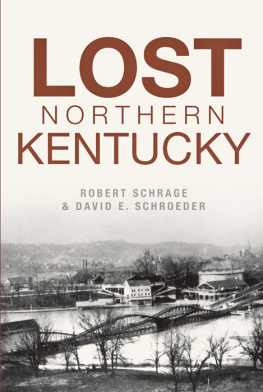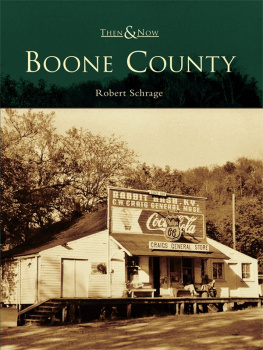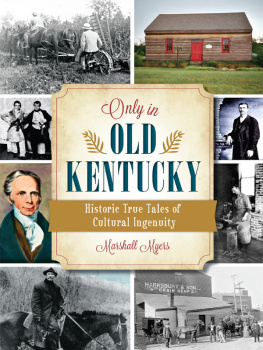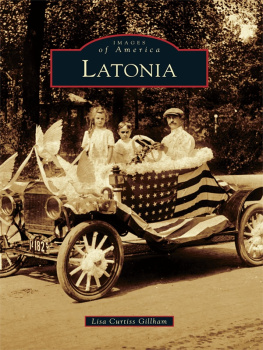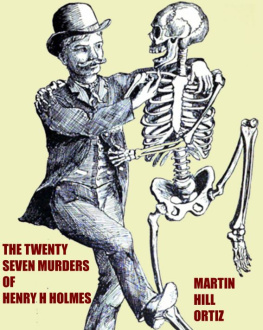


Published by The History Press
Charleston, SC
www.historypress.net
Copyright 2018 by Robert Schrage and David E. Schroeder
All rights reserved
First published 2018
e-book edition 2018
ISBN 978.1.43966.440.7
Library of Congress Control Number: 2018932099
print edition ISBN 978.1.62585.982.2
Notice: The information in this book is true and complete to the best of our knowledge. It is offered without guarantee on the part of the authors or The History Press. The authors and The History Press disclaim all liability in connection with the use of this book.
All rights reserved. No part of this book may be reproduced or transmitted in any form whatsoever without prior written permission from the publisher except in the case of brief quotations embodied in critical articles and reviews.
To Richard Schrage, who would have turned one hundred years old in 2017. Thanks for still being an inspiration in my life.
and
Ed F. Schroeder, who taught me about loyalty to community and dedication to public service.
CONTENTS
ACKNOWLEDGEMENTS
The authors wish to thank Cierra Earl and Garry Collum of the Kenton County Public Library for their assistance with photographs and Dr. Paul A. Tenkotte and Dr. James Claypool for their foundational work in Northern Kentucky history. Thank you Ann Schrage, Kevin Kelly and Matt Becher for your help and support. A final thank-you goes to Kaitlin Barber, Bridget Striker and Hilary Delaney from the Boone County Library for their photographic and informational assistance.
INTRODUCTION
O ne of the great pleasures of history is to uncover something long lost to time. Northern Kentucky is filled with such history that defines who we are today. Unfortunately, much of this history that stood right in front of our ancestors eyes is gone. It is either a distant memory to those who witnessed it or, to others, an introduction to its existence and impact on the region. In Northern Kentucky, so much lies in ruins or in the dustbin of history. Nevertheless, it is important. As Abram Joseph Ryan said, A land without ruins is a land without memoriesa land without memories is a land without history.
As we know, Northern Kentucky is the most northern part of the commonwealth of Kentucky, and Boone, Campbell and Kenton Counties make up the vast majority of the population. Historically, this population has been of German and Irish heritage, starting before Kentucky became a state. The first Germans came from the south and later via the Ohio River. The Irish came in segments, first the mostly Protestant Scots Irish and then Irish Catholics. The immigration of these groups impacted the history and development of Northern Kentucky perhaps more than any other single factor. The other great influence on the region is the Ohio River, which not only helped immigration but also the settlement and growth of the first communities, including Covington and Newport, whose foundations date to the 1700s. Other river towns developed from Campbell County in the east to Boone County in the west. Many, such as Silver Grove, Dayton, Bellevue, Newport, Covington and Ludlow, still exist. Other towns have been lost to history. For example, in Boone County, Constance, Taylorsport, North Bend, Touseytown and East Bend have disappeared. In Kenton and Campbell Counties, many cities were established and remain incorporated to this day.
The estimated population of the three northern counties, according to the Tri-County Economic Development Corporation, is 384,700. Many of these people are new to the area with no real knowledge of the history of the region, especially the history lost to development and progress. Still others, mostly older, remember the great historic structures that dotted the landscape. This book serves as an opportunity for new residents to learn about the tremendous history lost over the years but still a large part of who we are as a community. For long-term residents, it is a trip down memory lanean opportunity to reminisce about times gone by.
This book will focus on history lost in Northern Kentucky in business and industry, religious structures, schools and civic buildings, recreation and residences. While there are so many structures in these categories lost to history, there are also success stories where buildings have been saved. It would not do history justice without talking about some of the saved buildings. They represent great history that through reuse are right before our eyes and their historic grandeur still present. Unfortunately, much has been lost, including great churches such as Saint Aloysius and Madison Avenue Presbyterian in Covington and Marydale in Boone County. Other lost history includes the beaches of Dayton and Bellevue, hospitals like Speers and beautiful civic buildings such as the Covington City Hall and the old federal building. Beverly Hills Supper Club, Lookout House, Bavarian Brewery and Wiedemann Brewery are excellent examples of lost businesses and industry.
There are many choices to make in writing a book of this nature. Not everything is included. However, if the reader has experienced these structures in person, it is hoped they can relive the memory. If the reader has never seen the structures, hopefully these pages bring the excitement of a first trip. More than anything, it is desired that by reliving this history, we can come to better appreciate our past. As a result, maybe we can save some of the existing, but threatened buildings for future generations.
BUSINESS AND INDUSTRY
WIEDEMANN BREWERY
George Wiedemann was born in Eisenach, Germany, in 1833 and immigrated to the United States around 1853. He moved to Newport, Kentucky, in 1870 and founded the George Wiedemann Brewing Company. It became one of the largest brewing companies in the nation and the largest in Kentucky. A major expansion of Wiedemanns brewing operations took place in the 1880s when he developed five acres of land at Sixth and Columbia Streets in Newport. Designed by architect Charles Vogel, it became, according to the Encyclopedia of Northern Kentucky, one of the worlds largest and most efficient breweries.
The Wiedemann Brewery structure became one of the most iconic and popular buildings in Northern Kentucky history. This was in part due to its magnificent size for a brewery of its time, the fame of the Wiedemann name, the popularity of the beer and its place in Northern Kentucky lore and the popularity of the old beer garden in the twentieth century. The brewery was five stories tall and included a stable that could house 150 horses. In 1893, the famous Samuel Hannaford and Sons architectural firm designed the beautiful and ornate Wiedemann offices. The brewery consisted of many iconic components, such as the curved corner, boiler and engine rooms, storage cellars, racking and wash house, main office, bottling shop, storage and garage complex, tower, stacks and brew house.

Aerial view of Wiedemann Brewery. Kenton County Public Library.
Wiedemann Brewery continued to grow and eventually was taken over by Wiedemanns sons Charles and George Jr. However, the federal government shut the brewery down during Prohibition. Before the brewery was shut down, the federal government charged it with violation of the Volstead Act for producing 1.5 million gallons of illegal beer. The grand buildings were actually padlocked, and George Wiedemanns grandson Carl served time in a federal penitentiary over the illegal brewing. It reopened following repeal and did very well for the next thirty years. Wiedemann kept up on technology and had the first steel fermenting tanks west of Pittsburgh in 1946. By 1967, the annual capacity stood at 900,000 barrels. However, the market changed. The number of breweries in the region went from twenty-six in 1898 to four by 1967. With this loss, Newport no longer housed the last large brewery in Northern Kentucky. It symbolized a need for the community to revitalize itselfwhich residents successfully did over the next couple decades. The entire structure was demolished in the 1990s, and today, part of the land is used to house the Campbell County Justice Center. It continues to live in the memory of many Northern Kentuckians who can remember the grand buildings that operated during their lifetimes. There were efforts to save the structures, and the city was awarded a federal grant to convert them to an office and retail complex. Unfortunately, those plans fell through. Even though a distant memory, the Wiedemann Brewery Complex stands as a symbol of the regions strong brewing tradition and industrial innovation.
Next page
